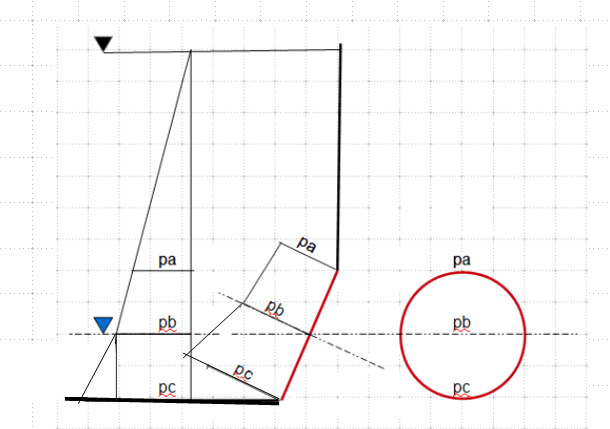Forgive me for these drawings, I can't think of a better way to illustrate the problem right now.
When looking for the resultant hydrostatic force on a flat surface, we can use the formula $F = PA$: force equals the resultant pressure exerted on the surface's center of gravity, multiplied by the surface area.
Consider the following system. A water pool of depth H is given, there's a disk-shaped gate of diameter D in the bottom with an inclination of $\theta$. Finding the resulting pressure exerted on said gate is not a hard task: we can find the depth of the center of gravity of our gate with respect to the water fluid, $h_{cg}$, with trigonometry. Then, the formula for pressure yields $P = \rho_w g h_{cg} = \rho_w g \left( H - \frac{D}{2} sin \left(\theta\right) \right)$.
We can also deal with multiple fluids of varying density. The following image, for example, adds mercury in the top H/4 section:
It isn't hard to use the whole mercury depth $\rho_{hg} g \frac{H}{4}$ and then, once again, consider the remaining portion of water up to the center of gravity of the gate, $\rho_w g (\frac{3H}{4} - \frac{D}{2} sin(\theta))$. The resultant pressure is the sum of these two terms.
Which leads me to my actual question: What can we do in the case where the fluid goes from the bottom up? The example given below puts mercury in the bottom H/10 section of the pool. It clearly doesn't reach the gate's center of gravity. What can we do in these cases? Is there a way to project the mercury-section pressure on the center of gravity? Do we have any alternatives?
Thanks in advance!



